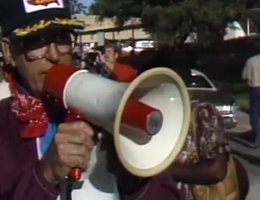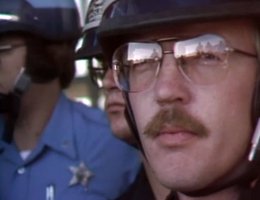


By the 1980s, the situation in agriculture was worse. At least a third of Nebraska farmers were in danger of loosing their farms. Banks were foreclosing on loans to farmers, and auctions were increasing, selling off the machinery and household items of bankrupt farmers. People were desperate, and some began to listen to extremist groups. The threat of violence was real.
Nebraska agricultural producers enjoyed prosperous times in the early 1970s with a generous federal farm policy designed to bolster farm income. As a result, farm production was greatly increased and many of the farm products were sold to foreign markets. Unfortunately, farmers and ranchers were encouraged to borrow more because of inflated farm prices and favorable interest rates. They took on heavy debts. Federal tax laws also encouraged outside investors to invest in livestock. Many farmers were encouraged to buy new machinery and more farmland, even though the land prices were seriously inflated.
The bubble burst in the 1980s when President Jimmy Carter’s embargo on food sold to Russia was imposed. Later, President Ronald Reagan’s administration attempted to reduce government payments to agriculture.
Interest rates started to go up, land values dropped, and the export market dropped dramatically. More than one-third of Nebraska’s farmers found themselves in financial trouble. Bankruptcies increased and the flight from the farm was stimulated, which caused a ripple effect throughout the state’s economy.

More and more farmers ran out of money and couldn’t pay their bills or loans. So, more and more banks lost money on bad loans. Nebraska’s rate of bank failure was one of the highest in the nation in the early ’80s. Many producers found they could not pay their property taxes on the land, let alone pay the principal and interest on the land they had purchases. Delinquency on property taxes increased nearly 400 percent between 1980 and 1985.
Banks had to foreclosure on more and more farm loans, taking possession of the land, machinery and household items that had been pledged as security against the loan. Auctions would then be held to sell the assets to satisfy at least part of the debt. Some farmers resisted, and some county sheriffs reported that they were met with guns when they went to serve foreclosure orders.
In 1970, there were about 73,000 farms in the state; by 1992 the number had fallen by 23 percent to 56,000. The flight from the farm became a stampede in the 1980s, especially in the western part of the state where some counties’ farm population dropped by 50 percent. Many farmers and ranchers had to look for jobs in urban centers that offered a better chance of finding a job.
While the amount of land devoted to farming operations has decreased slightly since 1970, the average size of farms has increased greatly. In 1970, Nebraska farms averaged 659 acres; by 1992, they had increased by 28 percent to an average of 841 acres.
The number of farmers and ranchers in Nebraska has steadily declined from 10 percent of the state’s total work force in 1970 to about six percent in 1990. In the 1980s, farm income never exceeded 10 percent of all personal income earned in the state. While it is true that the actual production of agricultural products is becoming a less significant factor in the Nebraska economy, related services — food processing, marketing, and transportation industries — combine to make agricultural basic to the state’s economy.